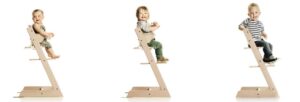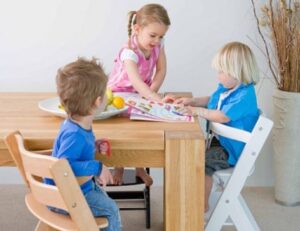
The importance of good positioning during mealtimes
I am so excited to have my colleague from The Little Foodies team, Rachel Elliott (Ability Focus Occupational Therapy) write a guest blog post on the importance of positioning during meals. Occupational Therapists (OT) and Speech Pathologists (SP) work quite closely together particularly with feeding issues. I know I have learned a lot from OTs over the years and what better time to celebrate their role than during Occupational Week this week!
If you would like an occupational therapist, I cannot recommend these girls enough! Did you know that Ability Focus Occupational Therapy and Let’s Eat! Paediatric Speech Pathology are involved in a multidisciplinary feeding team? It includes Rachel, myself and Emma, a Clinical Psychologist (with The Jacaranda Centre) – please contact us if you would like some more information.
Here is Rachel & Rhiannon (Ability Focus Occupational Therapy)’s guest post:
As an Occupational Therapist, I am always looking at how a child moves functionally and how stable they are in a range of positions, including sitting. Postural stability is the ability to maintain our body in a controlled position against gravity. It requires good muscle strength in the muscles around the neck, spine, tummy and pelvis. If we don’t have good postural stability, then we often use much more energy and effort to hold our bodies in a good (or not so good) position.
The 3 main reasons that good positioning during mealtimes is so important:
- It supports our breathing;
- It provides support and security when sitting, which allows us to focus on eating our meals;
- It allows for better hand-to-mouth coordination (fine motor skills) and enables your child to chew better.
What is the ideal position and how can we get it?
Think: 90-90-90 (that’s 90 degree angles for hips, knees and ankles)
 The Stokke Tripp Trapp chairs offer great positioning for children at the family table.
The Stokke Tripp Trapp chairs offer great positioning for children at the family table.
1. Feet resting flat on the floor or foot rest :
a) you can also use a stool, old phone books taped together, an esky, milk crate or a heavy box);
b) you can also purchase chairs such as the Tripp Trapp Chair or the Mocka Soho chair which provide built in foot support and grows with your child
 This is the highchair I use in my clinic, it’s a bit cheaper but slightly different from the Tripp Trapp – pros and cons each way I think! Available here at mocka.com.au
This is the highchair I use in my clinic, it’s a bit cheaper but slightly different from the Tripp Trapp – pros and cons each way I think! Available here at mocka.com.au
2) Knees should be resting comfortably over the edge of the chair:
a) If chair too big (i.e. knees don’t reach the edge of the chair and legs stick straight out) – try bringing your child forward by placing a cushion behind his back.
3) Hips should be comfortably placed at back of chair:
a) If you child slouches in their seat due to poor postural stability, try a wedge shaped cushion to provide a bit of tilt to help sit upright;
b) If you child wriggles constantly or struggles to remain seated, try a move & sit cushion or a hot water bottle placed on the chair.
4) Shoulders should be relaxed and elbows the same height as table:
a) If table too big – build up by sitting child on cushions or booster seat;
b) If table too small – look at getting smaller chair for child to sit on, otherwise they are likely to slouch in their chair.
Information presented by: Rachel Elliott & Rhiannon Pilgrim, Occupational Therapists with Ability Focus Occupational Therapy. Both therapists have extensive experience working with children with a range of developmental and physical difficulties. For more information check out their website or Facebook page.
This website and information on this blog post is provided for educational purposes. It is not meant or intended to replace Speech Pathology or Occupational Therapy assessment and management nor medical or nutritional care for a child. It is recommended that you discuss any concerns or questions you might have with your Speech Pathologist and managing Doctor and develop an individualised team plan specifically for your child.
